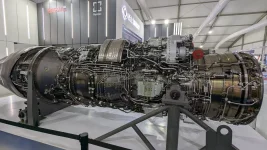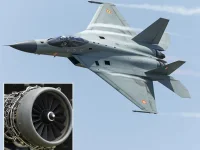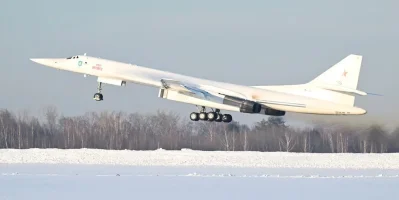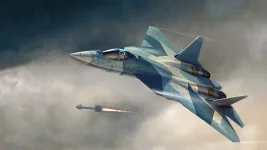- Views: 1K
- Replies: 28

At Aero India 2025, Russia made a significant proposal to India, offering the advanced AL-41 engine that powers its Sukhoi-57 stealth fighter for the upgrade of the Indian Air Force's (IAF) Sukhoi-30MKI fleet. This potential upgrade could substantially enhance the performance of the IAF's largest fighter jet fleet, bringing it closer to fifth-generation capabilities.
The Su-30MKI currently utilizes the AL-31 engine, known for its reliability and performance. However, the AL-41 engine, designed for the Su-57, represents a considerable advancement in power, thrust, and efficiency. With an improved thrust-to-weight ratio, better fuel efficiency, and enhanced maneuverability, the AL-41 is a compelling upgrade for the Su-30MKI, a mainstay of the IAF for over two decades.
Vadim Badekha, CEO of Russia's United Aircraft Corporation (UAC), confirmed this offer at Aero India 2025, stating, "We are offering the new AL-41 engine as part of the Sukhoi-30 upgrade to India." This offer underscores Russia's commitment to strengthening India's air combat capabilities by providing access to cutting-edge engine technology.
The IAF operates 272 Su-30MKI jets, its largest fleet of any single aircraft type. These aircraft play a crucial role in India's air defence strategy, fulfilling diverse roles from air superiority to ground attack. The Su-30MKI's versatility and advanced avionics have established it as one of the IAF's most potent fighter jets.
As the IAF modernizes its fleet and strives to maintain a technological edge, upgrading the Su-30MKI fleet with the AL-41 engine offers a significant opportunity to bolster its capabilities. This upgrade could substantially improve the fighter's speed, agility, and overall mission effectiveness.
Designed for high-performance aircraft like the Su-57, the AL-41 engine offers several advantages:
- Improved Thrust: The AL-41's superior thrust-to-weight ratio would enhance the Su-30MKI's performance in air combat, particularly during high-speed maneuvers and at higher altitudes.
- Enhanced Fuel Efficiency: Increased fuel efficiency translates to extended range and operational endurance, crucial factors in modern aerial warfare.
- Increased Reliability: The AL-41 is built for demanding conditions, making it a durable choice for the Su-30MKI's diverse operational environments.
- Fifth-Generation Capabilities: Integrating the AL-41 would provide the Su-30MKI with some of the performance enhancements found in the Su-57, bringing India's air power closer to fifth-generation standards.




